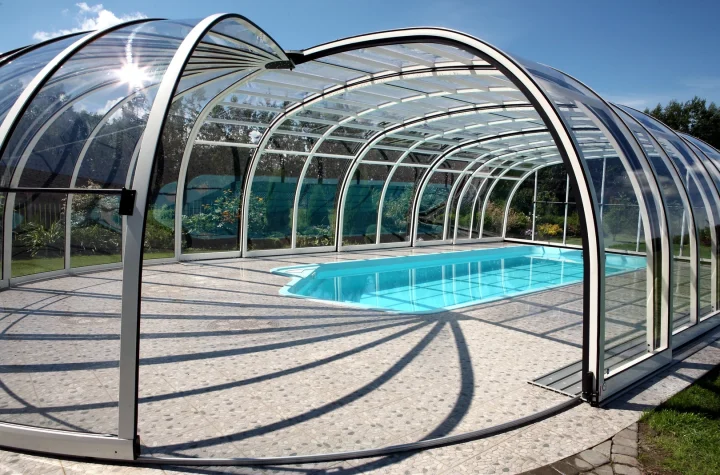
The proper application of texture painting techniques — and there are many — can take a static drawing and turn it into something dynamic. Its subtle and nuanced use can add movement and depth and infuse your work with an aesthetic that is all your own.
In Sgraffito medium, paint is scratching in to uncover layers underneath. Use any sharp object like a palette knife, the end of a brush, a comb, or a fork etc.
Layering
Yet adding layers achieved two vital effects: it created colour transitions and it produced depth-of-field illusions.
Stippling is a technique in which many tiny dots are drawn with the tip of a brush to create the effect of fur or hair. It is a way to imitate the realistic textures of skin, plants and fabrics on paper.
Flip cup and resin pouring add texture by painting over another layer of paint to create deeper texture and uneven surfaces, as well as tactile connections with the artwork and the artist.
Subtraction
Create a textured wall look that is as sophisticated as it is subtle – or as dramatic as it is transforming. From subtle vine textures to imaginary grooves and patterned walls, these unique painting techniques can add an unforgettable layer of depth and interest to any room in your home.
A first step might be to apply a value-related monochromatic layer, a rudimentary full-value sketch, if you will, set in values and composition; then you can add that value sketch as a layer and use it as a foundation from which to erase and build up detail and colour over time, thereby providing a strong basis for free invention.
This technique will make a more complex mix of brushwork. Drag a dry brush or rubber comb through the wet paint, making scratchy marks that reveal the underpainting.
Splattering
The splatters can be invigorating, expressive dynamic elements in compositions. Keep the size of the splatters relatively small for a more organic, natural effect.
Paint may also be darkened (sometimes with the help of a torch) to make riposta, or be used to create an appealing decorative pattern on a gesso surface before painting begins (called tornabuoni). This is higher-level stuff. If your goals are more oriented towards the art side, give it your best shot.
Scumbling, a finger-painting technique that employs light layers of paint over darker previous layers, leaving light areas between the brush strokes, was also used to create naturalistic shapes like clouds and foliage.
Stippling
One of the best and most elegant solutions to creating tonal depth in drawings is by using stippling for shading, but this technique works well only for dark-to-light tonal gradients. As with hatching and scumbling techniques, it is best to start off with simple 2-D shapes to get a sense of fully mastering the easiest subjects before tackling a more challenging subject.
Keep your pen to the paper but don’t let it dig in (if you have a nib, it should be just giving it a very light touch). Don’t leave flake marks in your dots, and step back regularly from your drawing for a perspective check and a new view.
- Use different contrasting colours to accentuate your stippled section so that it is more defined and texturised.
Scratch
As well as using a knife to make diagonal slices and indentations and scrape off paint, one of the nicest things you can do is to add a rich sense of depth and texture by scratching, that is, using blunt or pointed tools (eg, palette knives, or even the ends of brushes) to cut across the surface and reveal what lies beneath. This is especially useful for painting foliage and hair.
Most importantly, make your work original by experimenting with abstract designs formed from collages of materials or papers in your painting. Have fun and experiment with it – you may even find your aesthetic.
Dots
Dot painting is a fun activity that can be done on paper, canvas, rocks, wood, glassware for creative and ornamental purpose making artists great decorators for any space by creating unique rock mandalas.
It’s a cool way to create some visual interest on a wall. Striping a wall in various colours using painter’s tape is another great texture option, and you can create any direction or colour scheme you have in mind. Several colours striped in a checkered pattern would have the same effect. This would be a basic paint striping technique that you can do yourself with a paintbrush and some painter’s tape, or with more elaborate decorative or faux finishes for more special effects.
Dabbing
It is a method of applying paint that involves applying multiple colours onto the canvas and then dabbing and stamping down, altering brush pressure and turn of brush to create shapes. It is a very subtle way of painting compared with the other techniques described here and it will elevate your work by stealth, so to speak.
You will need a stiff bristle brush, a palette knife, a canvas or a piece of paper, and cloth or paper towels to dry the excess paint. Acrylic paint works good since it is fast drying and mix easily, but of course you can use chalk or watercolour paints too.





More Stories
The Art of Painting Miniature Models and Collectible Figures: A Tiny World of Huge Rewards
Adapting Traditional Painting Techniques for Digital Art Beginners
Breathe New Life Into Old Furniture: A Guide to Upcycling with Paint